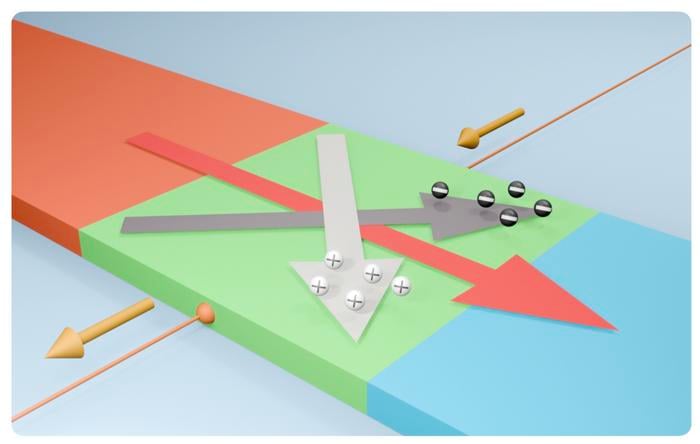Scientists have demonstrated a new approach to converting waste heat into electricity, using a material that generates voltage perpendicular to heat flow instead of parallel to it. This breakthrough in “transverse thermoelectric conversion” could lead to more efficient devices for capturing and utilizing waste heat from engines, industries, and other sources.
Published in PRX Energy | Estimated reading time: 4 minutes
Every day, engines and industrial processes release enormous amounts of waste heat into the environment. Thermoelectric materials, which can convert this heat into usable electricity, offer a promising way to improve energy efficiency. Now, researchers from Tokyo University of Science have demonstrated a novel approach that could make these devices simpler and more effective.
“Transverse thermoelectric conversion is a phenomenon that is gaining attention as a new core technology for sensors capable of measuring temperature and heat flow,” explains Associate Professor Ryuji Okazaki, who led the study. “However, there are only a limited number of such materials, and no design guidelines have been established.”
Traditional thermoelectric devices generate voltage in the same direction as heat flow, requiring complex arrangements of different materials connected in series. These connection points increase electrical resistance and reduce efficiency. The new approach generates electricity perpendicular to heat flow, potentially eliminating many of these connections.
The researchers demonstrated this transverse effect in tungsten disilicide (WSi2), a semimetal with unique electronic properties. Through careful experiments and computer simulations, they found that WSi2’s unusual electronic structure—featuring different types of charge carriers moving in different dimensions—enables it to generate voltage perpendicular to heat flow when properly oriented.
Key Terms Glossary
- Thermoelectric conversion: The process of converting heat directly into electrical energy, or vice versa
- Semimetal: A material with electronic properties between those of metals and semiconductors
- Transverse effect: A phenomenon where the output occurs perpendicular to the input, rather than parallel to it
Quick Quiz
How does this new approach differ from traditional thermoelectric devices?
It generates voltage perpendicular to heat flow rather than parallel to it, potentially requiring fewer electrical connections and improving efficiency.
What makes tungsten disilicide special for this application?
It has a unique electronic structure where different types of charge carriers move in different dimensions, enabling the transverse thermoelectric effect.
What is a key advantage of transverse thermoelectric devices?
They require fewer electrical connections than traditional devices, which could reduce electrical resistance and power loss.
What potential applications could benefit from this technology?
The technology could be used to capture waste heat from engines and industrial processes, and in sensors for measuring temperature and heat flow.
Enjoy this story? Subscribe to our newsletter at scienceblog.substack.com.
If our reporting has informed or inspired you, please consider making a donation. Every contribution, no matter the size, empowers us to continue delivering accurate, engaging, and trustworthy science and medical news. Independent journalism requires time, effort, and resources—your support ensures we can keep uncovering the stories that matter most to you.
Join us in making knowledge accessible and impactful. Thank you for standing with us!

